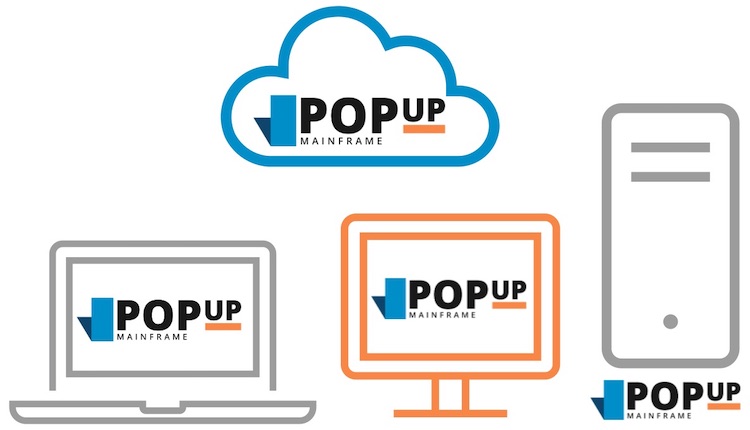For distributed applications, it is now routine and often expected that a dedicated environment can be spun up anytime one is required. This is in line with the agile and DevOps ways of working which are becoming ubiquitous in the distributed world. However, this has not commonly been the case for mainframe (and certainly is not widely implemented yet).
Non-prod mainframe environments are hard to get hold of!
Usually, mainframe test environments run on dedicated LPARs with typically fixed MIPS allocation. As these test environments are “sharing” the mainframe resources with prod environments, there is a strict quota with tight restrictions on usage. The total mainframe capacity (including test capacity) cannot be extended without purchasing more resources at great cost.
This lack of mainframe test environments necessitates tight scheduling and control so the environments can be shared. Many organisations have a mainframe-skilled environment management team for this purpose, and in many cases, inefficient processes governing mainframe test environment setup and requests.
What is the impact of mainframe environments not being available?
Mainframe environment unavailability has a ripple effect and impacts the whole organisation, reducing the ability to deliver change at speed. This includes:
- Project delays (the need to schedule in advance with a fixed mainframe test window). Some projects are not started at all due to the unacceptable risk of no mainframe testing.
- Often no environment is available and testing is skipped completely. Regression testing is commonly not performed, resulting in low quality change and risk to the business.
- High cost of change. Due to environment scheduling and process overheads, performing full testing can be very slow, therefore high cost.
- Mainframe environments are not aligned with agile/DevOps ways of working so can enforce waterfall deliveries, hindering time to market, and preventing agile/DevOps practices from providing proven business benefits.
These challenges impact any project across the enterprise which relies on mainframe. Many projects involve a change only in the “front end” but depend on testing the “back end” (i.e. mainframe) even when it is not changing, and often suffer from lack of mainframe test environments.
What is the difference with PopUp Mainframe?
All too frequently it is impossible to get a dedicated mainframe environment – no matter how long you waited. Now you can use PopUp Mainframe to create a new mainframe environment running on x86 hardware in minutes. It is a game changer!
PopUp Mainframe enables the near-instant rollout of non-prod mainframe environments, integrated seamlessly with your IT estate. Anything that you might already do on a non-prod mainframe environment can be done on PopUp Mainframe – testing and development, R&D, third party software evaluation, training for testers and developers and much more. Teams can elect to have one PopUp Mainframe environment for a specific project, or give individuals their own (identical or different) mainframe environment to work in.
Read more: What is PopUp Mainframe?
Features of a dedicated mainframe environment
1. Self-service
Self-service creation of mainframe environments empowers teams and reduces the need for costly mainframe environment management and governance and process overheads.
2. Portable
PopUp Mainframe can be deployed on any x86 hardware wherever it is needed – cloud, server, desktop, container etc. For example, your mainframe environment can be hosted alongside a distributed system for easier integration.
3. Isolated
Team members are able to work on a project in isolation. This improves enterprise security, keeping your core mainframe secure and aiding compliance. There is no risk to the physical mainframe, so developers are able to implement quick test environment changes during dev/test, such as defining new transactions and resource definitions, without involving mainframe production operations staff.
4. Indestructible/expendable
Employees can experiment and learn without any fear of harming prod mainframe environments. This enables innovation, agile experimentation and prototyping which is not an option in tightly controlled and restricted mainframe environments.
5. Very low cost
Very low cost compared to physical mainframe as it runs on commodity x86 hardware. As MIPS on the physical mainframe are freed up, total mainframe license and running costs may reduce as well. With PopUp Mainframe, it is not cost prohibitive to provide dedicated mainframe environments to offshore/outsourced teams and trainees.
6. Ability to rollback
Users can rollback environment to a previous state on demand via self-service.
7. Full confidence
100% reliable setup and configuration of the environment as it is cloned from a gold copy.
8. Flexibility
It is now easy to match environment provisioning to the business needs and adapt your delivery models in line with agile practices.
Just some use cases for a dedicated mainframe environment
- Development
- Use with a desktop IDE
- All aspects of Testing including Regression testing against mainframe. Read more: Mainframe testing – What’s the difference between PopUp Mainframe and physical mainframe?
- Software evaluation
- R&D
- Proof of concept development
- Offshore or 3rd party environment
- Training environment
- Use of a mainframe data “gold copy” on demand across the enterprise
- Checkpoint, forward and rewind data
Your dedicated mainframe environment is here!
PopUp Mainframe finally enables you to create dedicated mainframe environments on demand, accommodating many varied use cases. Users no longer need to wait for a mainframe environment to be available. They can have one as and when they need, with the topology and configuration which they require.
It also brings myriad other benefits including greatly reduced costs, reduced reliance on niche mainframe skills, self-service capabilities, cloud readiness and is a key enabler for mainframe DevOps practices.
Learn More
Contact us to discuss your unique requirements today.

